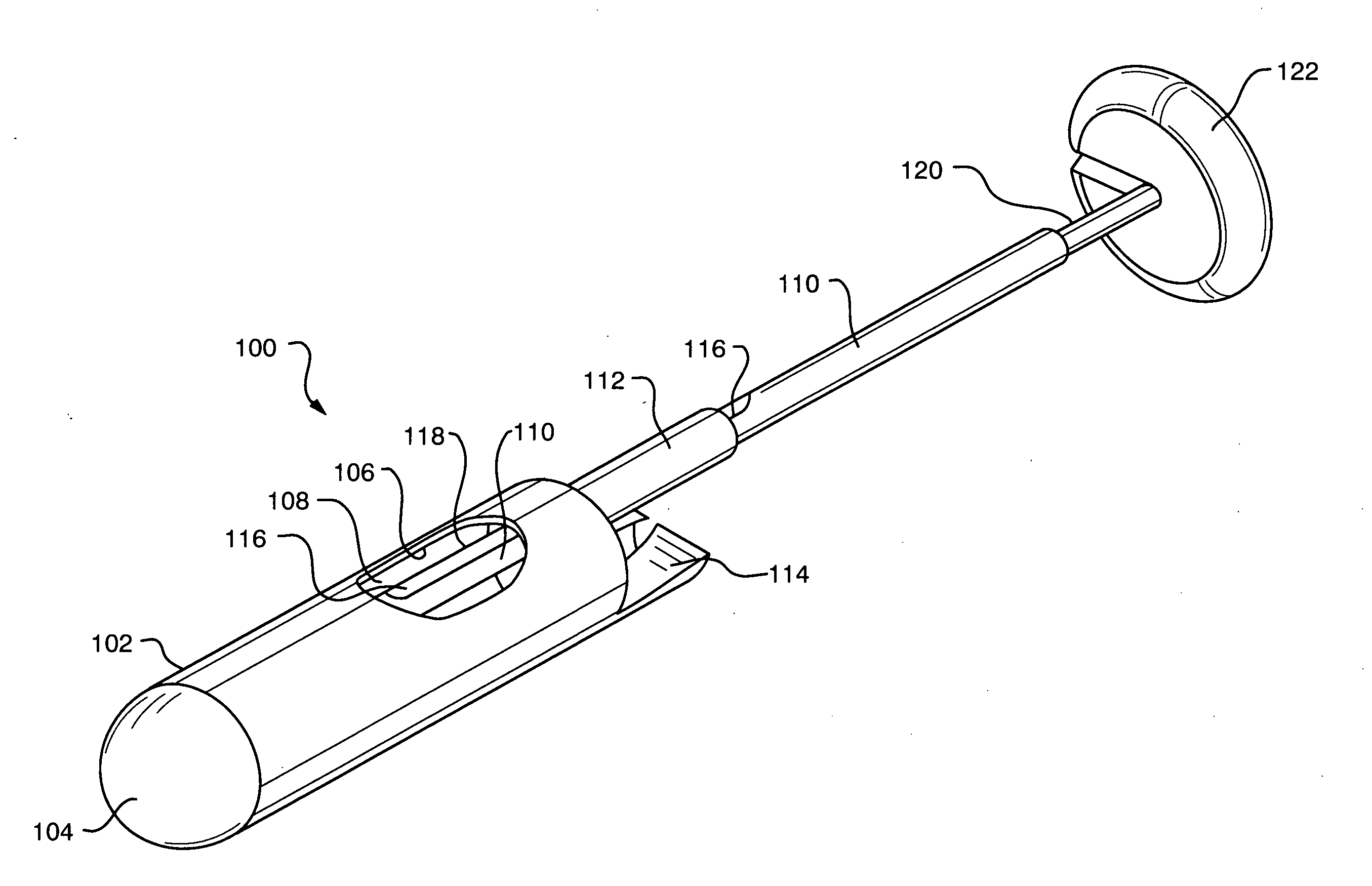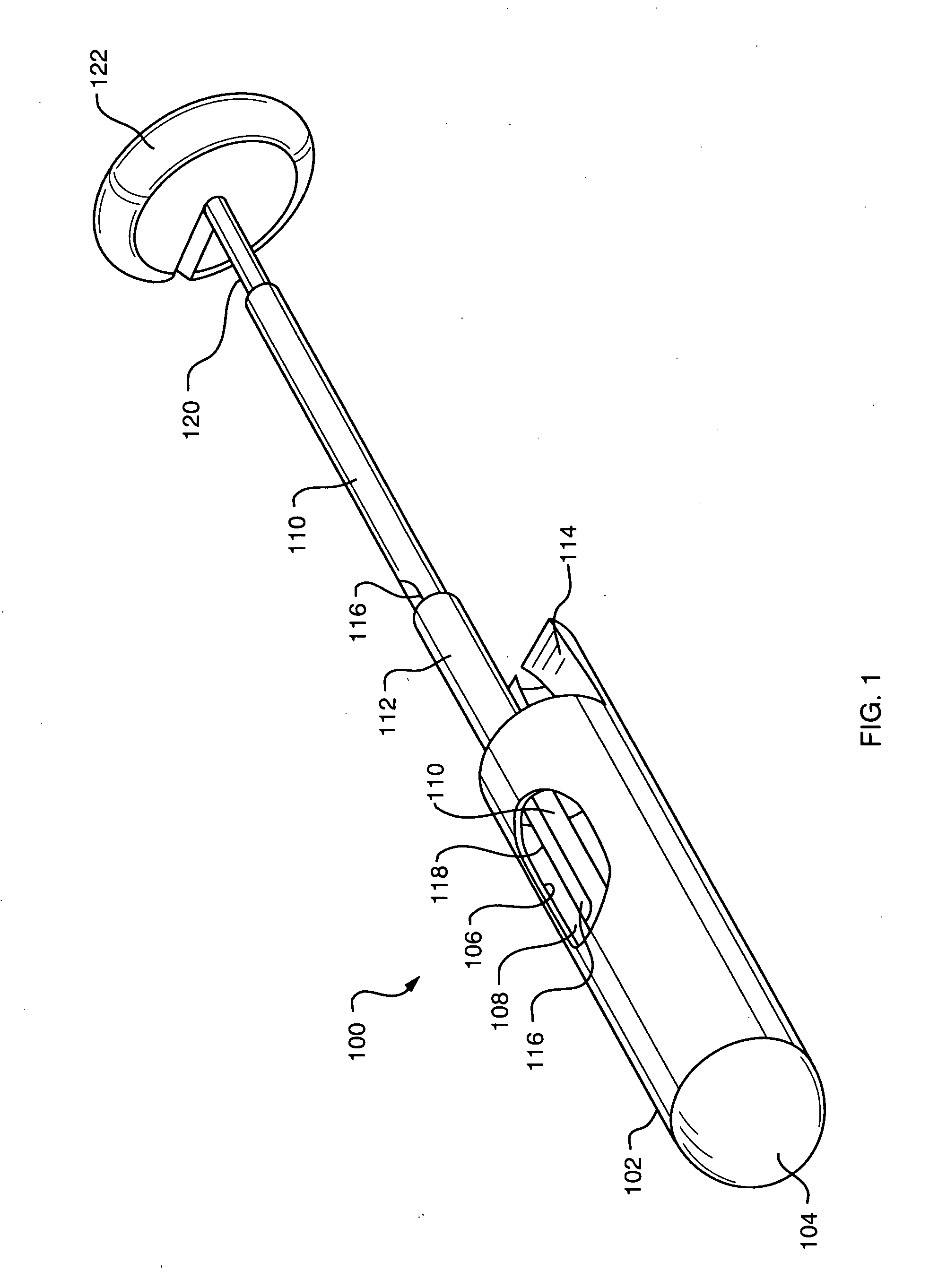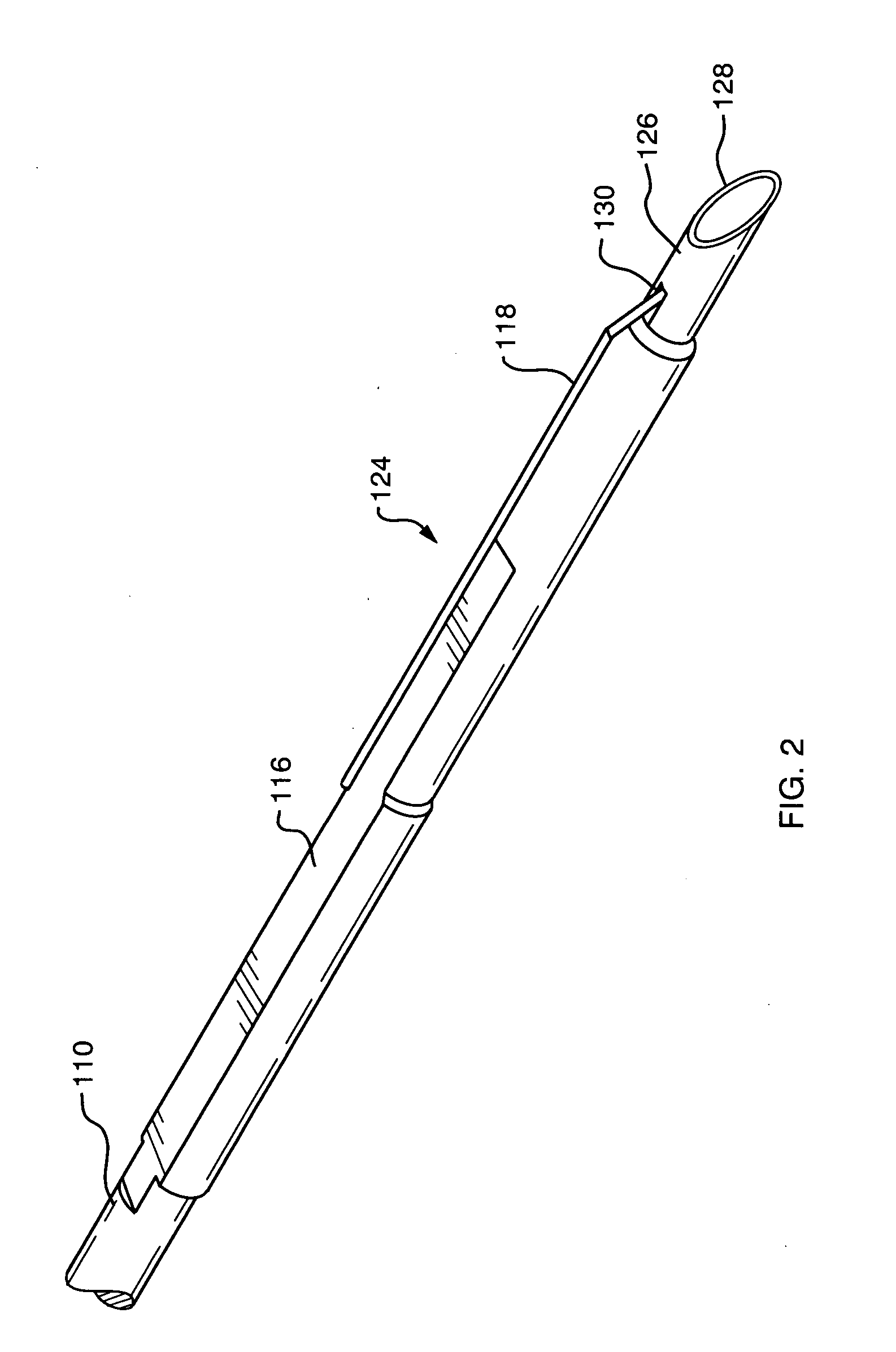Tissue capturing and suturing device and method
a technology of tissue apposition and suture clip, which is applied in the field of new combination of endoscopic tissue apposition device and suture clip delivery device, can solve the problems of invariably long use of such devices, inability to perform the various procedural steps endoscopically, and significant problems with the described gastroplasty procedure, so as to reduce the need for cam surfaces and cam followers, reduce the abrasion of sutures, and reduce the need for friction.
- Summary
- Abstract
- Description
- Claims
- Application Information
AI Technical Summary
Benefits of technology
Problems solved by technology
Method used
Image
Examples
Embodiment Construction
[0074] A description of the embodiments of the present invention is best presented in conjunction with an explanation of the operation of a prior art tissue apposition device, which this invention serves to improve. FIGS. 28A-30 depict a prior art endoscopic suturing device disclosed in U.S. Pat. No. 5,792,153. FIG. 28A shows the distal end of a flexible endoscope 90, on which a sewing device 2 is attached. The endoscope is provided with a viewing channel, which is not shown, but which terminates at a lens on the distal face of the endoscope. The endoscope is further provided with a biopsy or working channel 3, and a suction channel 4 the proximal end of which is connected to a source of vacuum (not shown). The suction channel 4 may comprise a separate tube that runs along the exterior of the endoscope, rather than an internal lumen as shown. The sewing device 2 has a tube 5, which communicates with the suction pipe 4 and has a plurality of perforations 6 therein. These perforations...
PUM
 Login to View More
Login to View More Abstract
Description
Claims
Application Information
 Login to View More
Login to View More - R&D
- Intellectual Property
- Life Sciences
- Materials
- Tech Scout
- Unparalleled Data Quality
- Higher Quality Content
- 60% Fewer Hallucinations
Browse by: Latest US Patents, China's latest patents, Technical Efficacy Thesaurus, Application Domain, Technology Topic, Popular Technical Reports.
© 2025 PatSnap. All rights reserved.Legal|Privacy policy|Modern Slavery Act Transparency Statement|Sitemap|About US| Contact US: help@patsnap.com



